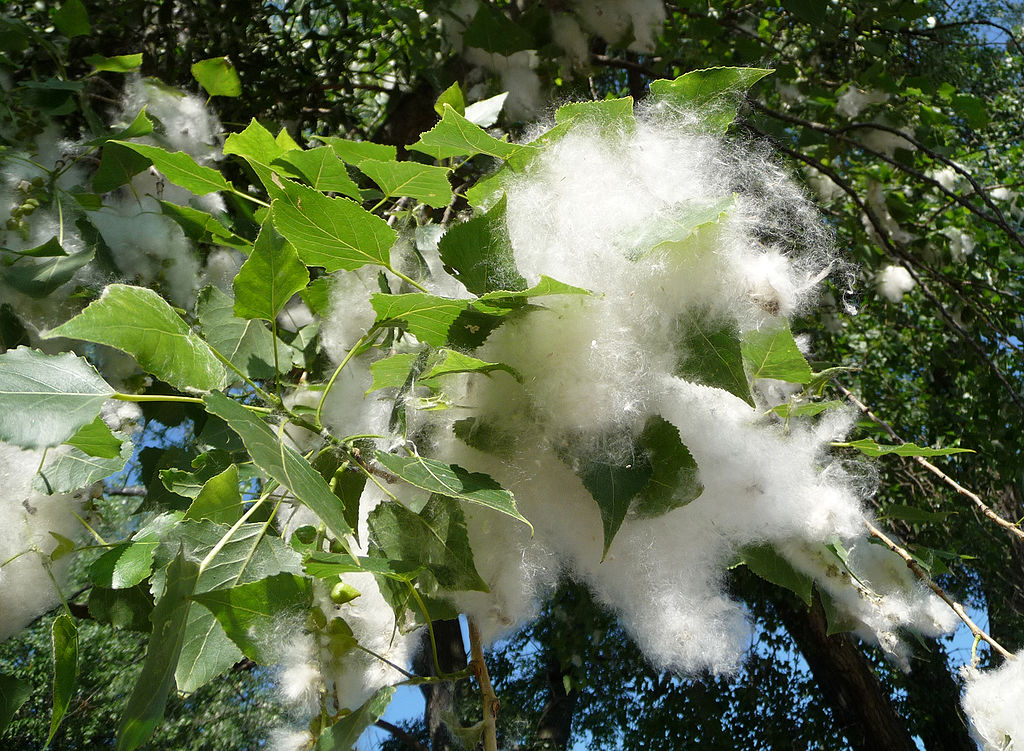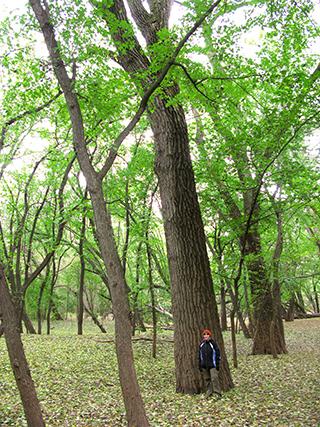Losing our cottonwoods: What’s at stake?

With its cottony seeds that fill window screens and collect upon our lawns and streets in early summer, the native Eastern cottonwood (Populus deltoides) is a fairly familiar species. Yet, despite being known for its bountiful seed, this seemingly ubiquitous tree is having a tough time growing where it's meant to — our floodplain forests.

Known as a pioneer species, cottonwoods are often one of the first trees to establish on open sandbars or in areas scoured of vegetation after a flood. They need full sun, bare soil and plenty of space to spread their giant branches. Under these conditions, they quickly outpace other seedlings. Growing up to 10 feet or more in their first year and another 5 feet each subsequent year, cottonwoods are the fastest-growing tree species in North America.
While white pines approach them in size, cottonwoods are also the most massive tree in Minnesota. Mature trees can reach more than 5 feet in diameter and 120 feet tall, towering over other trees to form the “super canopy” – the tree canopy above the tree canopy. The “giant sequoia of Minnesota,” a mature cottonwood seldom fails to generate awe in the observer.
Our at-risk giants
Due to their height, cottonwood trees are favored nesting and perching sites for bald eagles, providing an excellent "eagles eye view" of the landscape. Other raptors also nest in them while dozens of bird species forage in their branches and in the deep grooves of the bark. The downy seeds make preferred nest-lining material for many bird and mammal species, and due to the antimicrobial properties of the tree resin, native bees specifically seek out cottonwoods when making propolis, a substance that helps protect their hive from diseases. These are just a few of the many reasons cottonwood trees are important to our floodplains.
Unfortunately, a recent National Park Service study found that while there are many large, old cottonwood trees along the Mississippi River, there are very few young trees. A combination of factors is likely at play, including changes in hydrology, climate, and invasive species.

Hydrology or water flow changes stem primarily from changes made to the landscape for agriculture (draining wetlands, installing artificial drainage systems) and the increase in impervious surfaces (buildings, pavement, etc.) in urban areas. Dams on the river have also altered the river's flood pulse, permanently inundating portions of the floodplain that used to dry out seasonally. The volume of water running off into the river has risen dramatically (24% since 1976), resulting in more intense and more frequent floods. Changes in climate exacerbate these effects as Minnesota is getting wetter, with more storms and larger precipitation events. Additionally, flooding is increasingly occurring at unusual times of the year.
As a result, cottonwoods can sometimes be out of synch with our altered ecosystem. The cottonwood “seed rain” occurs in late spring or early summer. Typically, this is when floodwaters are receding, leaving sediment deposits perfect for cottonwood germination. With altered flood timing, open sediment may not be present when the seeds fall, so they don't survive. Even if these conditions are suitable and some seedlings do germinate, for their first couple years they remain highly susceptible to severe flooding.
But it's quite likely that the primary deterrent to cottonwood regeneration is an invasive species: reed canary grass. Spreading both by seed and rhizome, this non-native plant forms a very dense cover. Now widely established in floodplains, reed canary grass easily tolerates flooding extremes and readily recolonizes when waters recede. As a pioneer species, cottonwoods need bare soil conditions and little or no competition. They evolved for floodplains, not reed canary grasslands.
Restoring the floodplain forest
FMR has been working with the Minnesota Department of Natural Resources to manage and restore habitat in the Gores Pool Wildlife Management Area (WMA) in Hastings, a riverfront site we helped protect years ago. The WMA includes stretches of floodplain forest that were historically used for farming and grazing; these areas are now a virtual monoculture of reed canary grass. Although the farming ceased decades ago, cottonwoods and other trees have still not re-established and it is apparent that they will not do so naturally.
With the help of volunteers, FMR has experimented with different planting methods at Gores since 2013. Volunteers have planted potted cottonwood trees, bare-root trees and live stakes. Live stakes are 1- to 2-inch diameter cuttings taken from stems of saplings during winter dormancy. So far, in terms of cost and efficiency, the stakes seem to hold the most promise.
This fall, we initiated a large-scale effort to install 300 live stakes in the Gores floodplain forest. The restoration planning culminated in a late-October outing with 26 employees of 3M. Volunteers harvested the live stakes from a nearby location where cottonwoods are over-abundant. We cut long, 4- to 5-foot stakes in hopes that they'll be tall enough to stay above potential floodwaters. The stakes were then “planted” amidst the reed canary grass, which had been mowed and sprayed to set it back. The critical last step was to install protective tree tubes over the stakes to prevent girdling by rodents and browsing by deer.
A few weeks in we're cautiously optimistic, but cross your fingers with us that 2017 doesn't bring severe flooding. We look forward to reporting back in a future issue of Mississippi Messages!


Additional reading
• Metabolomics Reveals the Origins of Antimicrobial Plant Resins Collected by Honey Bees
• National Park Service's cottonwood page